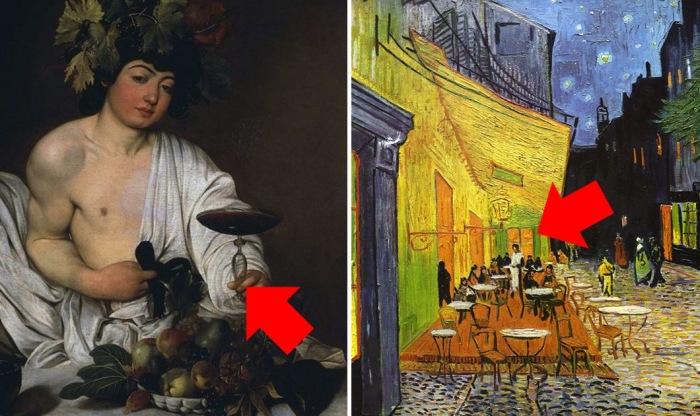cartouche
“The Invisible Artist”, which creates paintings on people, like on canvases
 Since today many acts of civil protest in China remain strictly prohibited, a well-known Chinese artist-photographer, master of the original creative camouflage of people, Liu Bolin invented a unique technique for expressing one’s own opinion and view on pressing problems of society. Working with his team of professionals, Bolin seems to dissolve himself and his employees in space, merging with the environment, which emphasizes that modern man is invisible and of little significance to government structures and those in power.
Since today many acts of civil protest in China remain strictly prohibited, a well-known Chinese artist-photographer, master of the original creative camouflage of people, Liu Bolin invented a unique technique for expressing one’s own opinion and view on pressing problems of society. Working with his team of professionals, Bolin seems to dissolve himself and his employees in space, merging with the environment, which emphasizes that modern man is invisible and of little significance to government structures and those in power.
He, with the help of his assistants, fits organically into both urban and natural landscapes, as well as supermarkets and various works of art. Bolin as a canvas can stand, without moving, in one place for several hours against a selected background, while his assistants paint it from head to toe, trying to mix it with the environment. Continue reading
What is the secret of the appeal of romances: The history of the genre from Spanish to cruel
 Touching songs performed by Larisa Ogudalova, a dowager, are just one of the signs of the romance, if we take into account its entire history. But once upon a time it began with other songs – both in terms of theme and method of performance. True, the main secret of the romance, which makes it so attractive for centuries, remains, perhaps, unchanged.
Touching songs performed by Larisa Ogudalova, a dowager, are just one of the signs of the romance, if we take into account its entire history. But once upon a time it began with other songs – both in terms of theme and method of performance. True, the main secret of the romance, which makes it so attractive for centuries, remains, perhaps, unchanged.
His predecessor has a rather distant relation to the usual idea of romance – and the point is not only that the evolution of this vocal and musical genre has been going on for many centuries. In an attempt to clarify the history of the romance, musicologists turned to Spain in the XIV – XV centuries, when songs in the local dialect began to be heard both at the royal court and at festivities – in contrast to church psalms performed in Latin. It is believed that the kingdom of Aragon became the birthplace of the romance, from where these songs spread through Spain through the efforts of the troubadours. Continue reading
VARIETIES OF GENRE STILL LIFE
 Still life (with FR. nature morte-dead, inanimate nature) – artistic depiction of various household items.
Still life (with FR. nature morte-dead, inanimate nature) – artistic depiction of various household items.
In the XV-XVI centuries still life was considered as part of a historical or genre composition. Early still lifes often performed a utilitarian function, for example, as a decoration of Cabinet doors or to mask a wall niche.
As an independent genre of painting still life was formed in the XVII century in the works of Dutch and Flemish artists.
The term nature morte (dead nature) appeared in the XVIII century and reflected a dismissive attitude to the still life by the academic community, which preferred the “high” genres, the area of which was “living nature” (historical, battle, allegorical, religious, mythological). Until the end of the XIX century still life was considered as a “lower” genre.
The heyday of still life painting is associated with the invention in the XIX century of the method of production of tube paints and the appearance of plein-air painting. Continue reading




